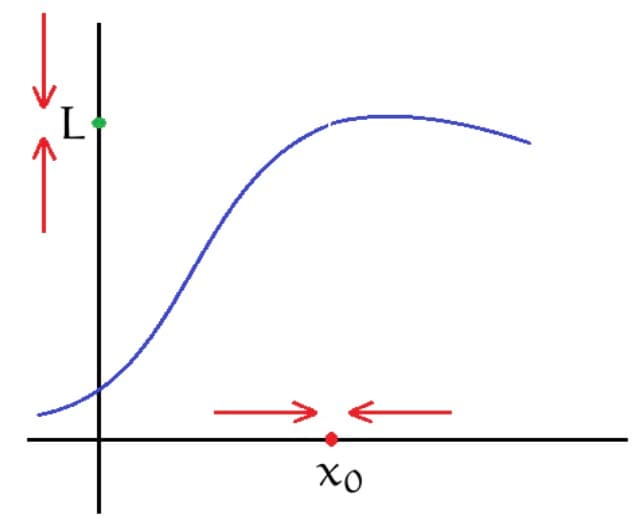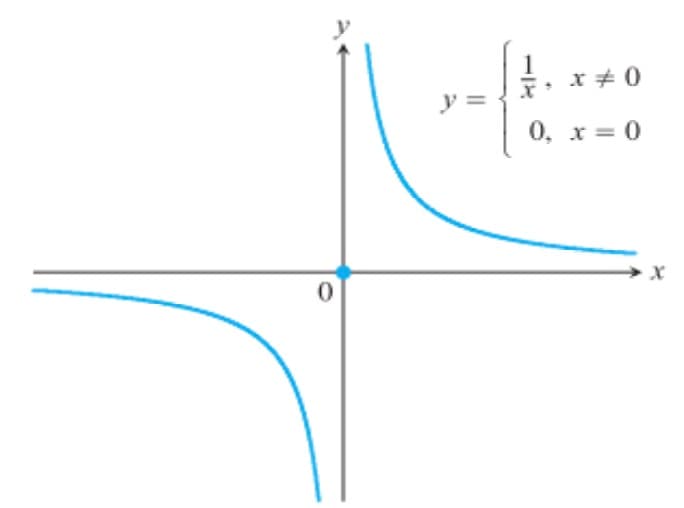Limits and Continuity
Introduction to the concept of limit
We can conceptualize that the limit of a function is as approaches , given that we can make as close to as we want for all sufficiently close to , from both sides, without actually letting be . We can write this as:

One-sided limits
There are two sides that can tend to a number. We can write it as and , which represents from the negative (left) / positive (right) side.
Existence of limits
The limit for a function only exists if and only if:
WARNING: If the limit is it doesn't exist.
For this example, when .
Similarly, as .
Hence, we can conclude that the limit for this function as doesn't exist.

Continuity
If a function is continuous on , there is a number in where in .
We use the IVT by first finding and , then apply the rule.
To prove that there is a root, we can use the IVT by showing there is a change of sign between the interval given.
Computing limits
Indeterminate forms are forms that cannot be solved by simply substituting the value of into the function. They are:
Note that . Related: L'Hopital's rule
For functions and using for simpler notation:
-
-
-
-
-
-
. This strict condition prevents indeterminate forms. We can use these laws to break a limit into separate limits, and compute that way. Also note that:
-
given that is continuous at
For the limit of a polynomial :
This can be proven easily with the limit laws above.
To solve for limits, we have to get the expression to the right form - a polynomial, for us to substitute our limit value into the function.
To do this, often we have to factorize or rationalize.
For the limit of a composite function , where is not continuous at , we find as , and then find at that value.
The following explains some common cases:
For , we can the logarithm to simplify the function, and determine and find .
To solve for limits of square roots, we can multiply by the conjugate to rationalize the function.
Suppose in the range , for in :
We will make use of the fact that the limits can be equal to solve for the limit of .
When we can't seem to factorize a function, we can try squeezing it between two other functions.
We know the limits of the function , so we can start from there.
Infinite limits
If gets (negatively) arbitrarily large when approaches , we can say:
After we know that the limit may be infinity, we then have to make sure that the limit is the same from both sides, so that the limit is actually . We can do so by plugging numbers which are approaching the limit from both sides.
Limits at infinity
It is not hard to see that, for rational numbers :
The easiest way to determine the limit would be to factorize the function so that we can use the fact above.
Using the above fact, we can see that for a polynomial with degree and largest coefficient :
Which means we can only consider the largest term in a polynomial for limits of infinity.
Substituting into the function gives , which is indeterminate. Hence, we must factorize it.
Or we can just simply use the theorem above and consider only to give .
We can simply cbonsider the largest terms on each side and give the final answer easily.
Note that, as we are considering the negative limit of infinity, we need to add - to the abs sign on line 3.
Asymptotes
Related: Graphing functions